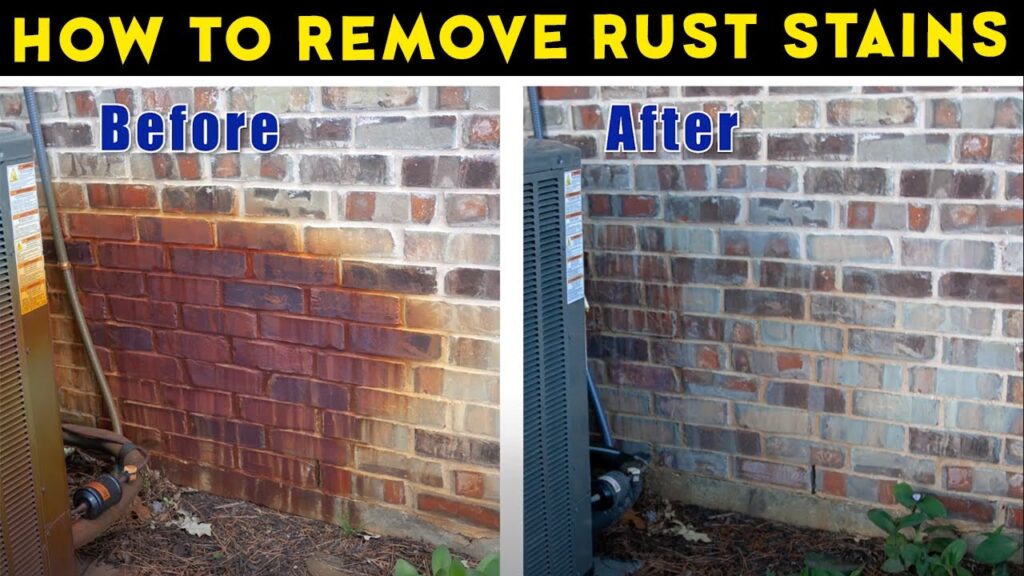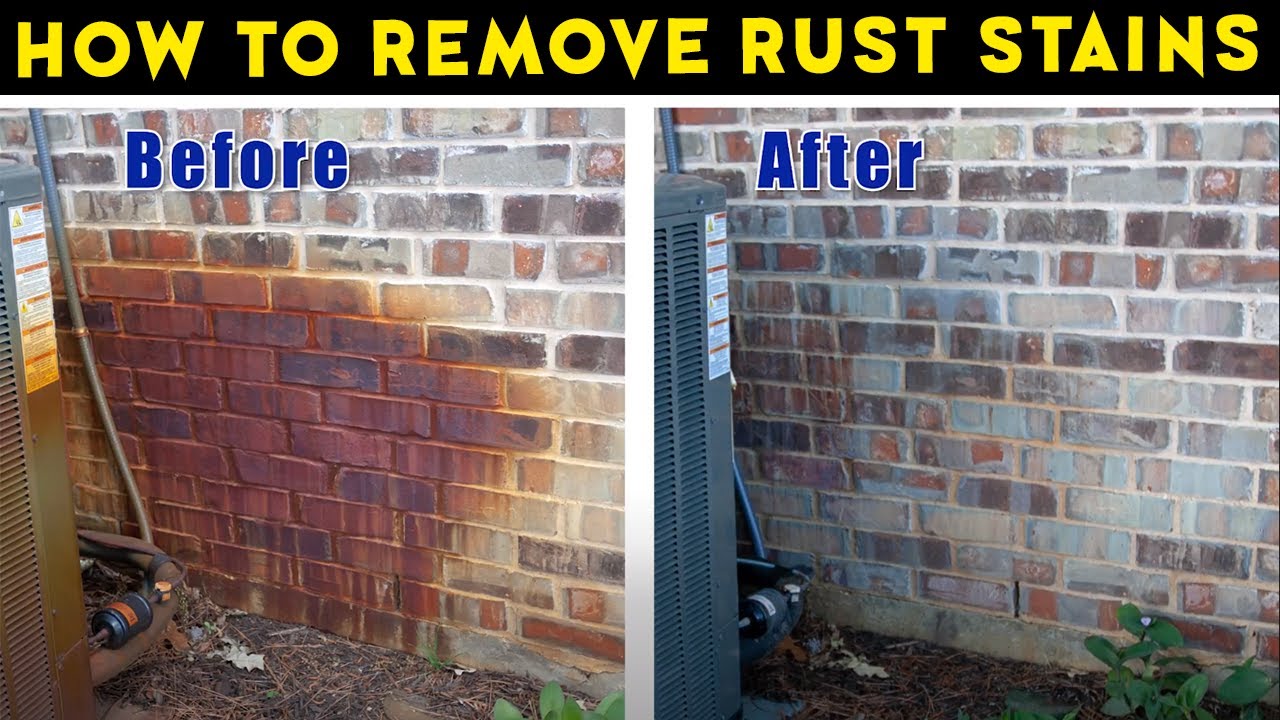
How to Remove Rust Instantly: Your Comprehensive Guide
Rust, the reddish-brown coating that forms on iron and steel through oxidation, is a common nuisance. It not only detracts from the appearance of metal objects but also weakens their structural integrity over time. The good news is that you don’t always need harsh chemicals or professional help to tackle this problem. This comprehensive guide explores various methods on how to remove rust instantly, focusing on readily available household items and proven techniques. Whether you’re dealing with a rusty tool, a corroded piece of furniture, or a vehicle part, understanding the underlying science and applying the right approach can save you time, effort, and money.
Understanding Rust Formation
Before diving into how to remove rust instantly, it’s crucial to understand what rust is and how it forms. Rust is primarily iron oxide, resulting from the electrochemical reaction between iron, oxygen, and moisture. This process, known as oxidation, causes the iron atoms to lose electrons and form a hydrated iron oxide, which we recognize as rust. The presence of electrolytes, such as salt, accelerates the rusting process. Therefore, coastal areas and environments with high humidity are more prone to rust formation.
Safety First: Preparing for Rust Removal
Before you start any rust removal process, prioritize safety. Wear protective gear, including gloves and eye protection, to prevent skin irritation and eye damage from rust particles and cleaning solutions. Work in a well-ventilated area, especially when using chemical rust removers. If you’re dealing with a large or heavily rusted object, consider using a respirator to avoid inhaling rust dust.
Household Items for Instant Rust Removal
Many common household items can effectively remove rust instantly. Here’s a look at some of the most popular and effective methods:
Vinegar
Vinegar, particularly white vinegar, is a mild acid that reacts with rust, dissolving it and making it easier to remove. Submerge small rusted items in vinegar for several hours or overnight. For larger items, soak a cloth or sponge in vinegar and apply it to the rusted area. After soaking, scrub the rust with a stiff brush or steel wool. Rinse thoroughly with water and dry completely to prevent further rusting.
Baking Soda
Baking soda, also known as sodium bicarbonate, is a mild abrasive that can help remove rust instantly without damaging the underlying metal. Make a paste of baking soda and water, apply it to the rusted area, and let it sit for a few hours. Then, scrub the area with a brush or steel wool. Rinse with water and dry. Baking soda is particularly effective for light rust and delicate surfaces.
Lemon Juice and Salt
The citric acid in lemon juice, combined with the abrasive properties of salt, can be a powerful rust remover. Sprinkle salt over the rusted area, then squeeze lemon juice over the salt. Let the mixture sit for a few hours, then scrub with a brush or steel wool. Rinse and dry thoroughly. This method is great for small, localized rust spots.
Potato and Dish Soap
Believe it or not, a potato can help remove rust instantly. The oxalic acid in potatoes reacts with rust, loosening it from the metal surface. Cut a potato in half and apply dish soap to the cut side. Scrub the rusted area with the soapy potato. The combination of oxalic acid and dish soap helps to break down the rust. Rinse with water and dry.
Citric Acid
Citric acid, often available in powdered form, is a stronger acid than vinegar and lemon juice, making it highly effective for removing rust. Dissolve citric acid in warm water according to the package instructions. Submerge the rusted item in the solution for several hours or overnight. Check periodically to see if the rust is dissolving. Once the rust is gone, rinse the item with water and dry it thoroughly. [See also: Best Rust Prevention Methods]
Mechanical Methods for Removing Rust
In addition to chemical methods, mechanical techniques can also remove rust instantly, especially for stubborn or heavy rust buildup.
Steel Wool or Wire Brush
Steel wool and wire brushes are effective for scrubbing away rust. Use a coarse steel wool or wire brush for heavy rust and a finer grade for lighter rust. Always scrub in the direction of the metal’s grain to avoid scratching the surface. Wear gloves and eye protection during this process.
Sandpaper
Sandpaper is another abrasive method for removing rust. Start with a coarse grit sandpaper to remove the bulk of the rust, then gradually move to finer grits to smooth the surface. Sandpaper is particularly useful for preparing metal surfaces for painting or coating.
Power Tools
For larger areas or heavily rusted objects, power tools like angle grinders or sanders with abrasive attachments can significantly speed up the rust removal process. Use caution when using power tools and always wear appropriate safety gear, including eye protection, a respirator, and gloves. [See also: Rust Removal Tools and Equipment]
Commercial Rust Removers
If household methods are not sufficient, consider using commercial rust removers. These products contain stronger chemicals designed to dissolve rust quickly and effectively. Always follow the manufacturer’s instructions carefully and wear appropriate safety gear when using these products.
Chemical Rust Removers
Chemical rust removers come in various forms, including liquids, gels, and sprays. These products typically contain acids or chelating agents that react with rust, breaking it down and making it easier to remove. Apply the remover to the rusted area, let it sit for the recommended time, and then scrub with a brush or steel wool. Rinse thoroughly with water and dry.
Rust Converters
Rust converters, also known as rust reformers, don’t remove rust completely but rather convert it into a stable, inert compound. These products contain tannic acid or phosphoric acid, which reacts with the rust to form a black, paintable surface. Rust converters are useful for areas where complete rust removal is difficult or impractical.
Preventing Future Rust Formation
Once you’ve successfully removed rust instantly, it’s essential to take steps to prevent it from returning. Here are some tips for preventing future rust formation:
- Keep metal surfaces clean and dry.
- Apply a protective coating, such as paint, sealant, or oil.
- Store metal objects in a dry environment.
- Use rust-inhibiting products, such as rust-preventative sprays or oils.
- Regularly inspect metal surfaces for signs of rust and address them promptly.
Specific Applications of Rust Removal
The specific method for how to remove rust instantly can vary depending on the object and the extent of the rust. Here are some specific applications:
Removing Rust from Tools
Tools are particularly susceptible to rust due to their frequent exposure to moisture and dirt. To remove rust from tools, start by cleaning them with a wire brush to remove loose rust. Then, soak the tools in vinegar or citric acid solution for several hours. Scrub with a brush or steel wool, rinse with water, and dry thoroughly. Apply a thin coat of oil to protect the tools from future rust.
Removing Rust from Cars
Rust on cars can be a serious problem, leading to structural damage and reduced resale value. To remove rust from cars, start by sanding the rusted area with sandpaper to remove loose rust. Apply a rust converter to the area to stabilize the remaining rust. Fill any holes or dents with body filler, sand smooth, and then prime and paint the area to match the car’s color. [See also: Car Rust Repair and Prevention]
Removing Rust from Furniture
Rust on metal furniture can detract from its appearance. To remove rust from furniture, start by cleaning the surface with a wire brush or sandpaper. Apply a rust remover or vinegar to the rusted area and let it sit for several hours. Scrub with a brush or steel wool, rinse with water, and dry thoroughly. Apply a protective coating, such as paint or sealant, to prevent future rust.
Conclusion: Mastering Instant Rust Removal
Knowing how to remove rust instantly is a valuable skill that can save you time, money, and frustration. By understanding the science of rust formation and applying the right methods, you can effectively remove rust from various objects and prevent it from returning. Whether you choose to use household items, mechanical techniques, or commercial rust removers, remember to prioritize safety and follow the instructions carefully. With a little effort and the right approach, you can keep your metal objects looking their best and extend their lifespan. Remember to always dry the metal completely after cleaning to avoid immediate re-rusting. This is a critical step often overlooked.

